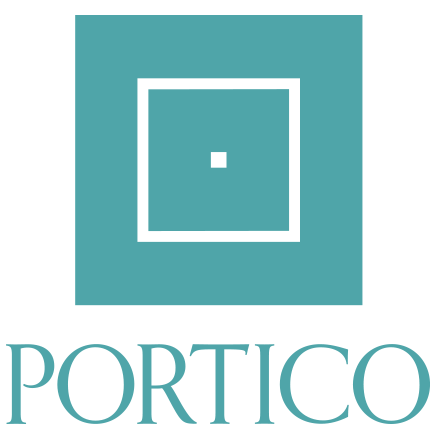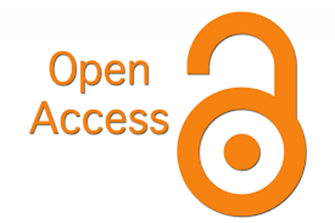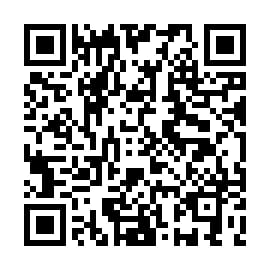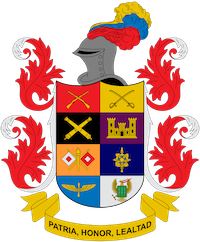Registration and login are required to submit items online and to check the status of recent submissions. Go to Login to an existing account or Register a new account.
Submission Preparation Checklist
As part of the submission process, authors are required to check that their submission meets all of the elements shown below. Submissions that do not meet these guidelines will be returned to authors.
- The article is completely original, does not infringe on the rights of other authors, and is of an exclusive nature (has not been published, accepted for publication, or submitted for consideration to another journal), conflict of interest, authorship disputes, and fragmentation.
- Two independent files (author information page and article structure) were prepared in the original language of the article (Spanish or English) using the formats of the journal Perspectivas en Inteligencia.
- The two files to be sent (author information page and article structure) are in Microsoft Word format, were filled out in their entirety and comply with the parameters established in the instructions for authors (style guide and submission preparation).
- All figures and tables included in the structure of the article are in color, in editable format and are located within the text and not at the end of it.
- The DOI (Digital Object Identifier) and web addresses of all references cited in the article structure have been included, as far as possible.
- The structure of the article has been completely anonymized, eliminating any reference to the author(s), following the established instructions and ensuring a blind review.
- Authors: to avoid research misconduct, authors should consult on the following international standards: research fraud, improper experimentation with or on animals and humans.
Guidelines for the autor
- STYLE GUIDE
In order to homogenize the presentation of the different articles, the editorial committee considers it pertinent to recommend that the person or persons interested in submitting an article for publication in the journal adhere to the following conditions:
- Send the article in magnetic media through the Open Journal System (OJS) platform of the journal Perspectivas en Inteligencia and they should correctly follow the style guide.
- The document must comply with the following characteristics:
- Font and size. Text, tables and illustrations should be presented in Times New Roman 12 point font.
- Be paginated at the bottom right of each page.
- Line spacing. The text should have a 1.5 line spacing.
- In no case should it exceed 20 pages.
- References. The journal Perspectives in Intelligence uses the style of the American Psychological Association (APA), 7th edition (2020).
- All articles should include the following information: title of the paper, name of the author(s), abstract (Spanish and English), key words (maximum five) (Spanish and English), content and development of the article.
- The content added to the article should not contain subtitles, only the main titles including introduction, conclusions and bibliography.
- In the title of the article a footnote should be inserted in an asterisk indicating or explaining the origin of the article (reasons or motives and type of article: reflection, debate, bibliographic review or research).
- For each author, a footnote containing the following information should be added with an asterisk:
- Full name(s) and surname(s)
- Undergraduate degree(s) and institution, city and country.
- Postgraduate degree(s) and institution, city and country.
- Position and institution, city and country.
- Unique ORCID identification codes (each author must have an individual code, in case you do not have one, you can generate one at the following link: https://orcid.org/register.
- Personal or institutional e-mail.
- The abstract of the article should not exceed 300 words.
- The criterion for choosing keywords is that they guarantee the visibility of the article in search engines and databases. These words are used by libraries and thematic indexes of journals to classify the articles, thus guaranteeing that when someone searches by topic he/she can have access to the article.
- Explanatory notes. Footnotes should be restricted as much as possible and should only be used to incorporate required explanations. Citation and reference cases should be made within the body of the article with the style of the APA norms (7th edition).
- Abbreviations. They should be used sparingly. For abbreviations, the nomenclature approved by the international union of the respective discipline should be used. These should be defined the first time they appear in the text and always be used thereafter to refer to the respective term. They should not appear at the beginning of a sentence or in the title and should not be used in the abstract.
- Equations. If the article includes equations, they should be left-hand side and numbered consecutively (in parentheses, right-justified). Use an equation editor. The meaning of each symbol in the equation should be made clear in the text. Example:
y = mx + b (1)
Where: y is the Abscissa, m is the slope of the line, x is the concentration of cells in g/ml and b is the intercept over y.
- Tables and figures. They should be elaborated according to the APA norms (7th edition) and sent in editable format. They should be duly numbered and mentioned in the text of the article. Each figure should be accompanied by the corresponding caption (in Times New Roman 11 point font and 1.5 line spacing). The legend should be sufficient so that the reader does not have to go to the text to understand its importance and result. Abbreviations and acronyms should be explained in the legends. If tables and figures from other sources are used, they should be copied exactly from the original and the source should be cited according to APA standards. When the tables and figures are the authors' own elaboration, based on the research, "Source: own elaboration" should appear as the last line of the legend of tables and figures.
- Illustrations, maps and drawings. They must have a minimum resolution of 600 dpi and be in color. Maps must contain legend, cardinal points and scale, when these data are relevant. Illustrations with specific copyright restrictions must have their respective legal authorizations, which must be attached to the declaration of originality and assignment of rights form.
- References. Authors should use APA style, 7th edition. In this reference model, the authors' surnames (without initials) and the year of publication are given within the main body of the text, with specification of precise pages in case of textual citations. For example: "Caldas (1815/1966) argues that [...]" or "[...] (Caldas, 1815/1966, pp. 57-58)". At the end of the main text, under the heading "References", only the sources cited should be listed in alphabetical order. Authors should ensure that all works, including newspaper articles, government documents and interviews, are fully referenced.
- Citations. Double quotation marks ("text") are used for in-text citations of no more than 40 words in length. Single quotation marks ('text') should be used for quotations within quotations. To mark an omission in a quotation, use the ellipsis between parentheses "(...)". If the quotation is longer than 40 words, it should appear as a separate paragraph, indented five spaces, without quotation marks and in 11-point font size.
- Words, quotations and texts in foreign languages. Individual words and short phrases in languages other than Spanish should be in italics. Texts in foreign languages must be accompanied by their respective translation in parentheses. The names of institutions and universities in foreign languages, among others, are written without italics, as they are proper names.
- All articles submitted to the journal will be evaluated by academic jurors, specialists or anonymous referees who are experts in the subject (in the double-blind mode), and the decision to publish them will be subject to the results of the anonymous evaluations. The editorial committee will inform the authors of the results of the evaluation in a timely manner.
- Those who publish in the journal "Perspectivas en Inteligencia" of ESICI, cede their patrimonial rights to the institution; consequently, they authorize ESICI to disseminate the articles of their authorship by any printed or electronic means, including the Internet, which it considers pertinent.
- The article must be accompanied by written proof, signed by the authors, that it is unpublished, is of their authorship and has not been proposed for publication in any other medium.
- PREPARATION OF THE SUBMISSION
All authors must prepare two independent files in the original language of the article (Spanish or English), in order for their submission to be considered: a) Authors' information page and b) Article structure. Click on the following links to download the formats: a) Authors' information page and b) Article structure.
a) Authors' information page. In MS Word format, letter size (21.59 cm x 27.94 cm), symmetrical margins of 2.54 cm and with the following information (Authors information page):
1) Authors. Full names and surnames of all authors (maximum 4), their institutional affiliations (name of the university or academic organization where they work or study and their country), their institutional e-mail addresses (hotmail, yahoo, etc. are not accepted), a brief summary of the academic profiles and research interests of each author and their unique ORCID identification codes (each author must have an individual code, in case they do not have one, they can generate one in the following link: https://orcid.org/register.
2) Type of article and thematic focus. Authors must specify that its structure corresponds to the characteristics and methodology of a scientific and technological research article. Likewise, they must determine to which thematic axis corresponds: Intelligence and Counterintelligence; Economics; History and Philosophy; Administration and Finance; or Technology and Development.
3) Academic acknowledgements. Their inclusion is optional and may include: sponsoring institution, other collaborators, institutions that supported the research, reviewers, translators, research permissions (including their reference code) and informed consents (when applicable). Personal acknowledgements (family members, deities, spouses) will not be accepted.
4) Disclosure statement. Conflicts of interest (personal or institutional) on the results obtained that will be published in the article, on the elaboration of the scientific work or during its review and publication, either by personal or work relationship with reviewers, editors or institutions, close relationship with funding sources or unfair academic competition are declared. A conflict exists when this biases and influences the judgment on the conclusions, results or any part of the research, or on the copyrights, or the acceptance and publication of an article.
5) Financing. The source of funding for the preparation of the article should be included, as well as its reference code (if applicable).
b) Article structure. In MS Word format, in letter size (21.59 cm X 27.94 cm), with symmetrical margins of 2.54 cm (Article structure). The following parts or structure are suggested for the content of the article (optional), as follows:
1) Title of the paper. It should not exceed 15 words.
2) Abstract. It should not exceed 300 words and should show, in a synthetic way, the outstanding contents of the text, in order to give the reader a broad view of the subject or problem dealt with in the document. The following structure is suggested as a minimum: objective, methodology, results and conclusions. Acronyms, tables or mathematical expressions, bibliographical references, speculative phrases, abbreviations or unfamiliar acronyms should not be used.
3) Keywords. Five key words indicating the topics of the article (lowercase and separated by semicolons). They should be listed in alphabetical order and be meaningful descriptors or expressions (never adjectives alone), that are developed in the content of the abstract and that contribute to the thematic location of the article. At least three key words must be included in the UNESCO thesaurus, available at the following link: http://vocabularies.unesco.org/browser/thesaurus/es/?clang=en
4) Introduction. It is suggested to include the topic addressed, the writings of other authors on the subject, the objective of the research and the main question or hypothesis. It should give the reader enough context information to understand the results. Here, the main question is established and why it was formulated.
5) Theoretical and conceptual framework. This develops the theory that supports the project in coherence with the problem statement (main question).
6) Methodology. This describes in detail how the study was developed and the way in which the variables and information were analyzed, so that the research can be replicated. This section of the article shows what was done to answer the main question. No results are included in this section, unless they are preliminary results used to design the research. For complex protocols, the use of diagrams, tables or flow charts is suggested.
7) Results. This section presents, in order of importance, only those results that help to answer the main question or hypothesis and support the conclusion. If appropriate, figures and tables are used. Results are not discussed or speculated upon, only reported.
8) Discussion. Here, the relevance of the results is established. The main question is answered, showing the relationship of this with the results, how these support the hypothesis and its coherence with previous research. Unexpected findings (if any) are reported and the reason is explained. Other possible interpretations of the results obtained and their contribution to the topic in general are presented. Limitations of the study and possibilities for future research should also be discussed.
9) Conclusions. What was stated in the introduction should be adequately closed and the reader should understand what is the most significant contribution, its relevance and possible use. The conclusions cannot extrapolate, recommend, or make statements derived from something different from what was measured; neither can they present arguments that are outside the limits of the research.
10) References. Authors should use APA style, 7th edition. In this reference model, the authors' surnames (without initials) and the year of publication are given within the main body of the text, with specification of precise pages in case of textual citations. For example: "Caldas (1815/1966) argues that [...]" or "[...] (Caldas, 1815/1966, pp. 57-58)". At the end of the main text, under the heading "References", only the sources cited should be listed in alphabetical order. Authors should ensure that all works, including newspaper articles, government documents and interviews, are fully referenced.
Privacy Statement
Personal data provided to the Perspectives in Intelligence journal will be used exclusively for the publication process of the submitted article and will not be provided to third parties or processed for any other purpose.



